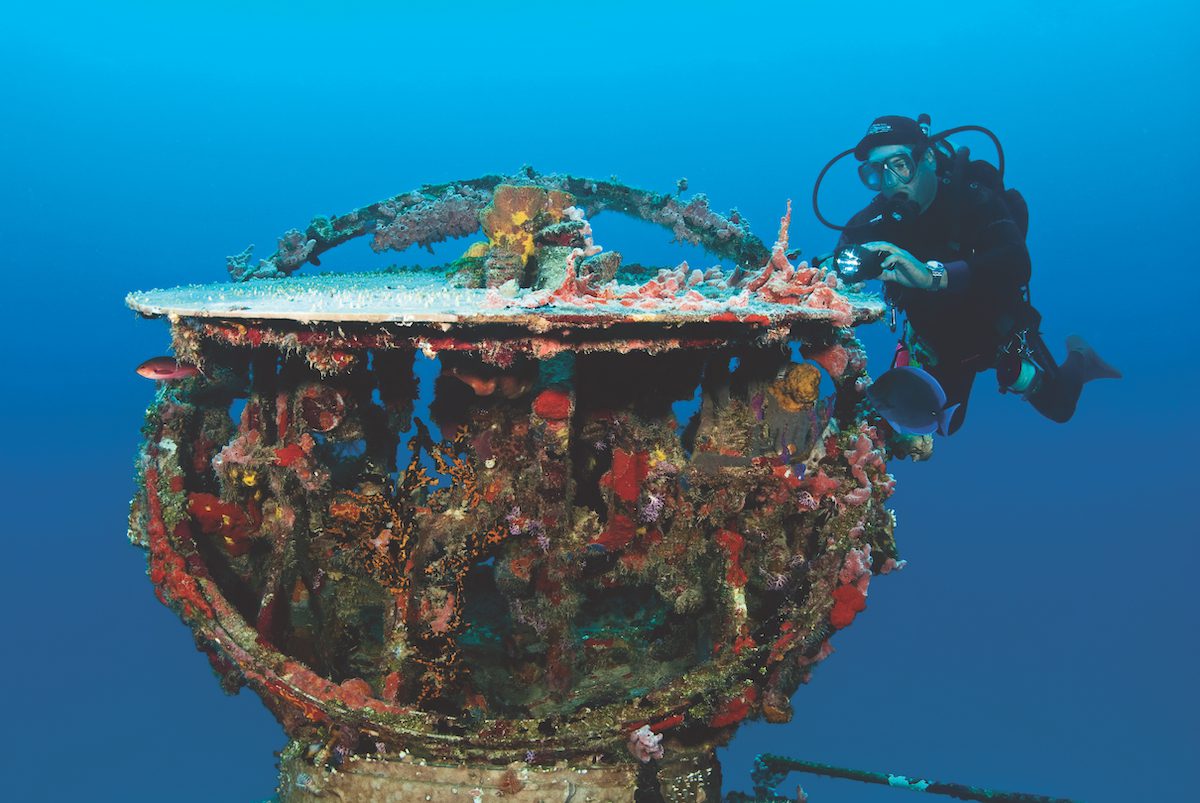Photographs by Stuart Philpott.
In part II of this Caribbean wreck diving series, Stuart Philpott shares some of the best wreck diving in the Caribbean.
Missed Part I? Read Best Wreck Dives in the Caribbean – Part I to catch up.
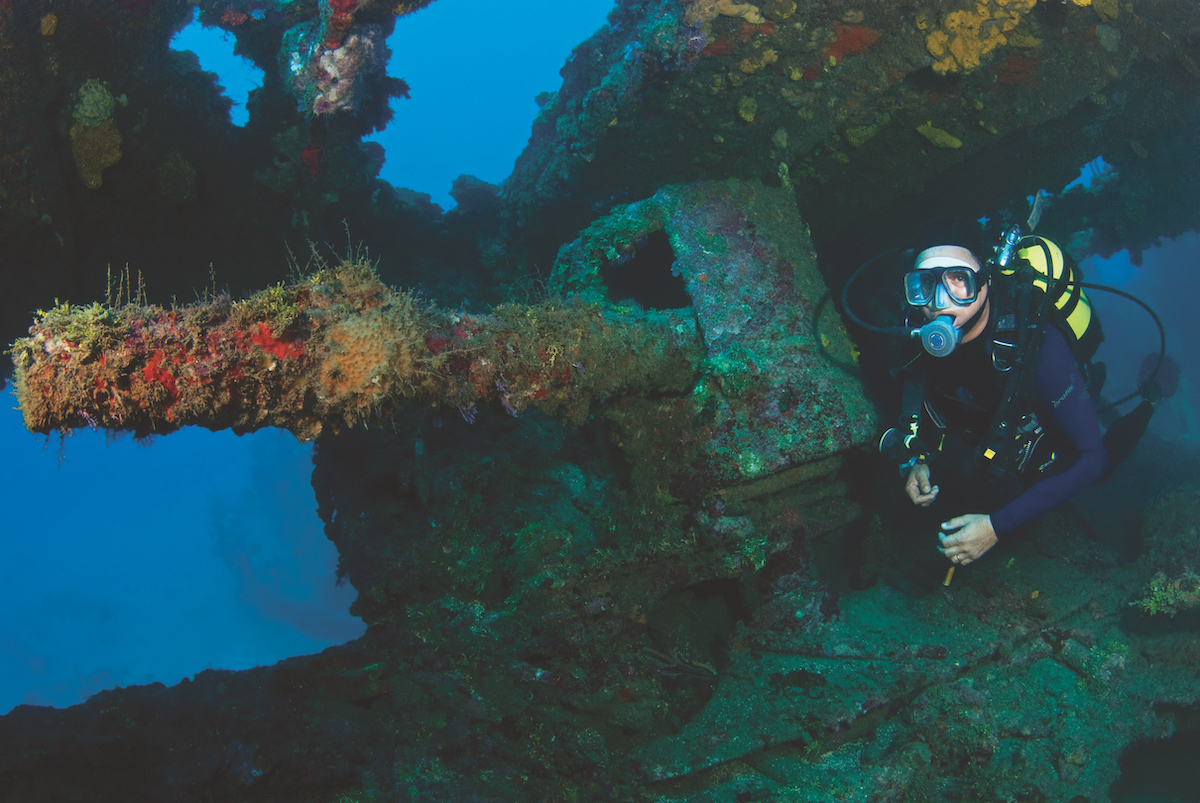
The US Virgin Islands
The US Virgin Islands are made up of four main islands – St Thomas, St John, St Croix and Small Water Island. St Thomas has some really nice wrecks but is not often visited by UK divers. Choices are limited to a handful of dive centres, including JJ Divers and Coki Dive Centre. Blue Island Divers has just closed down. Originally owned by a Brit, Aitch Liddle, they ran a friendly, professional service at the Crown Bay Marina Suite.
In all there are 40 sandy beaches. Accommodation varies from self-catering apartments to resort hotels. Dive centres usually offer pick up from hotels with water frontage, otherwise for all other accommodation it’s best to hire a car. There are more than 20 wrecks scattered along the south coast. Most are at a depth of around 30m and no more than 5km offshore (35 minute boat ride). Some even have portholes and brass fittings still attached.
1. WIT Shoal II
The WIT Shoal II is probably the best wreck dive on St Thomas. The 99-metre-long LST (Landing Ship Tank) was built in 1943 by Kaiser Co Inc. She saw intense action in the Pacific during World War Two and was involved in a number of the infamous beach landings. By the early 1980s she had become a non-functioning derelict and was sunk during Hurricane Klaus on 6 November 1984. She was re-floated in order to be scrapped but sank while being towed to her final destination. She now lies at a max depth of 28m, just 3km outside of St Thomas harbour. There are five deck levels to explore. The engine room is well worth a visit, although finding a way in can be quite tricky. The stern, wheelhouse and crane are the best areas. Two knot currents are quite common, but diving with some water movement does have its advantages. Monotone bulkheads transform into a blaze of colour when thousands upon thousands of tiny orange cup corals open up to feed. This wreck is perfect for night dives.
2. The Kennedy
The Kennedy is a 45-metre-long landing craft barge fitted with a concrete platform. It was used to ferry personnel to and from the aircraft carrier USS John F Kennedy. In 1986, it sank just off the coast, max depth 20m. The weighty platform detached from the hull and plummeted to the seabed. It now lies in front of the barge. Most of the upturned hull is camouflaged by dense flora. Southern stingray sightings are almost guaranteed. Giant sea anemones adorn the cargo hold.
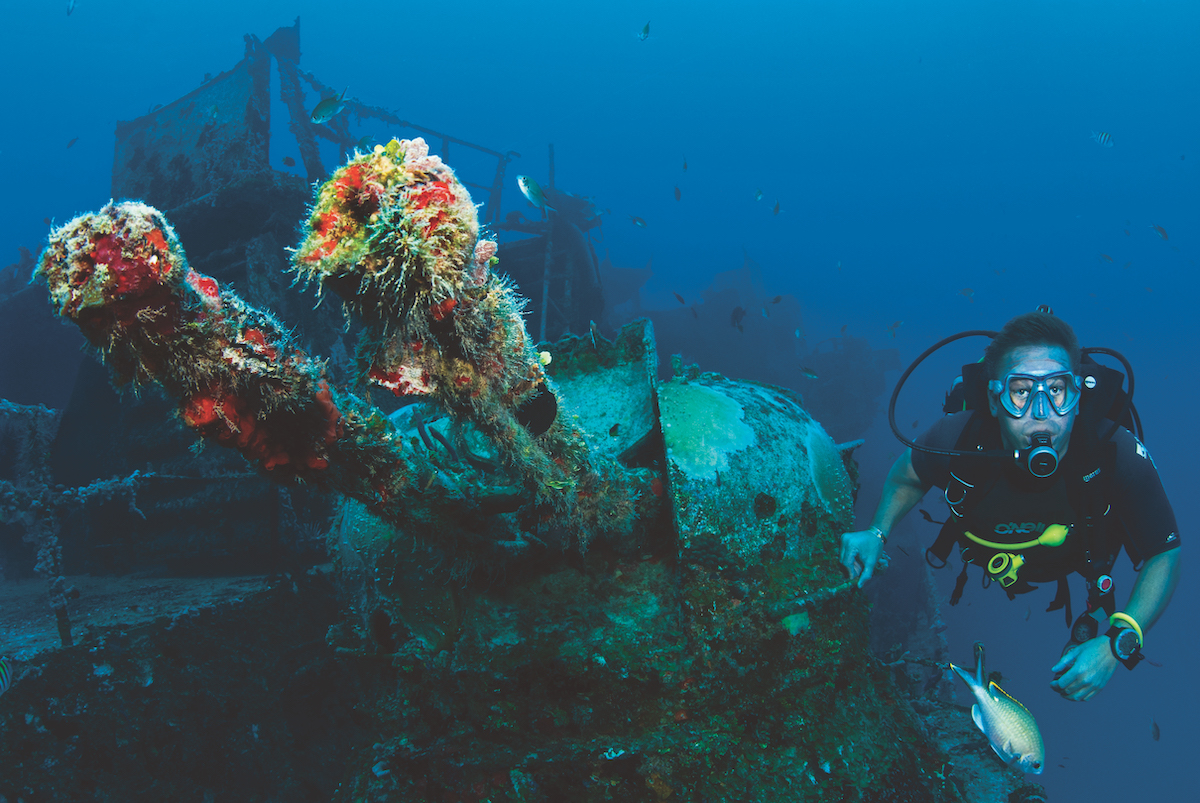
3. Navy Barges
The Navy Barges make a nice sedate dive. Five barges were used as accommodation during World War Two. After the war they were utilised as a Navy training area until they were finally sunk in 1961. Four of the five barges lie close together at a maximum depth of 13m. Shoals of snapper and grunts congregate around the distinctive criss-cross stanchions. This is a great macro dive, with a good variety of marine life flying about.
4. Miss Opportunity
Miss Opportunity is tucked close inshore by the airport runway. When sea conditions deteriorate, this protected site is the perfect choice. The 90-metre-long former hospital ship was intentionally sunk in 1985. She now lies on her starboard side at a max depth of 27m. Most of the wreck is easily penetrable. Access doors lead to huge wide-open rooms. Yellow barrel sponges have colonised ceiling lamps, which are confusingly pointing upwards due to the lie of the wreck.
5. SS Grainton
The 125-metre-long SS Grainton (6,042 tons) was built at Stockton on Tees in 1911. She was used as a Royal Naval Collier and then as a cargo vessel hauling wheat from the USA, Canada and Australia. On 31 May 1928, the SS Grainton hit rocks off Saba Island. Although attempts to re-float her were successful, she began to take on water and eventually sank while being towed back to St Thomas. She now lies at a max depth of 33m. Her boilers and huge three-cylinder steam engine stand proud. Big fish sightings are quite common including nurse sharks, barracuda and eagle rays.
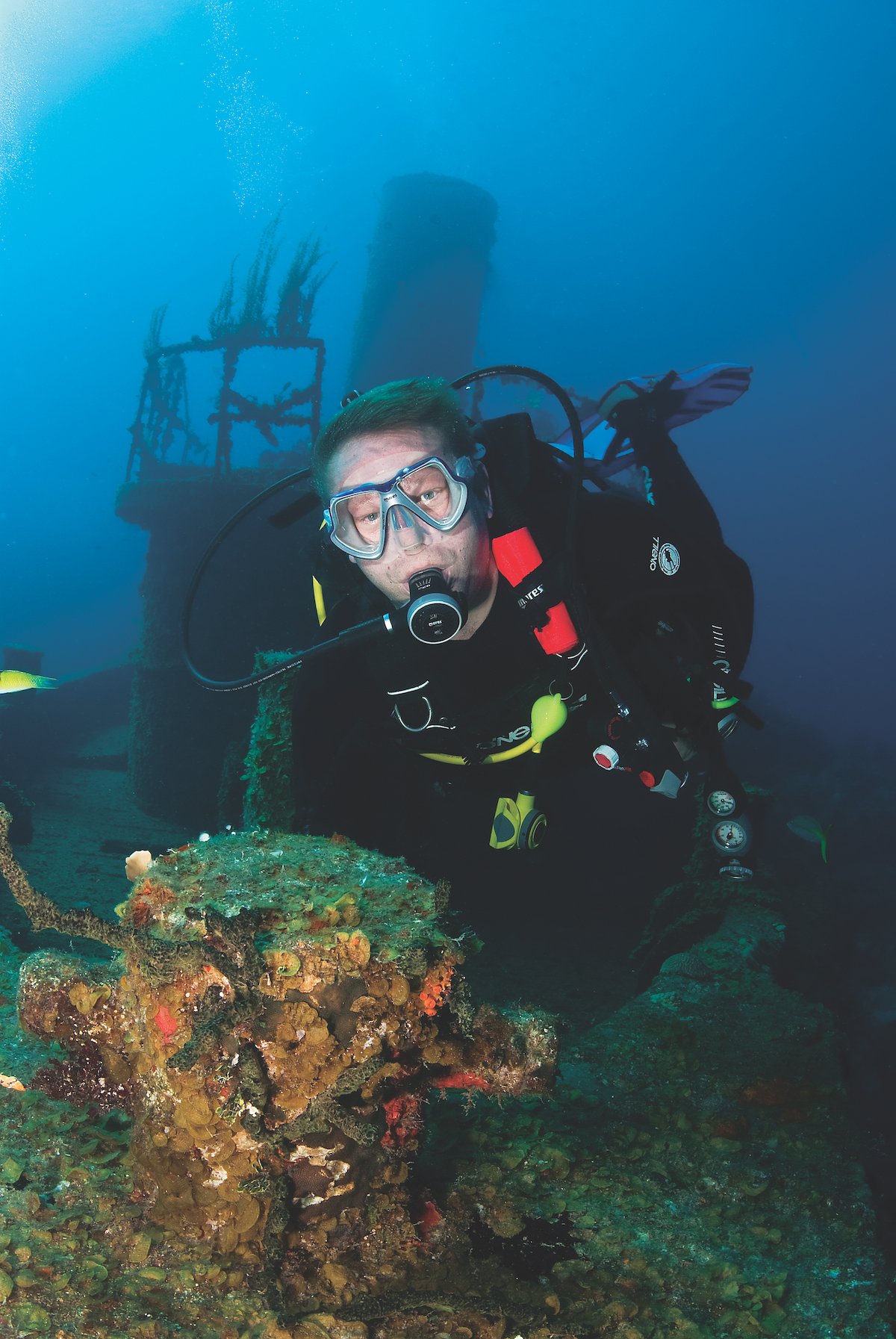
St Lucia
St Lucia is also located in the eastern Caribbean. Barbados and Grenada are neighbours. The lush tropical island is well known for weddings and honeymoons. There is a good range of resort hotels and luxury spas on offer, including Airbnbs. Public beaches are just as plentiful, including Anse de Sables, Pigeon Island and Reduit. Visiting divers can choose from approximately ten resident dive centres, Scuba St Lucia, Eco Dive, Scuba Steve’s and Dive Fair Helen to name but a few.
The west coast has about 22 named dive sites, mainly boat dives. There are quite a few reef dives especially in the Soufriere marine park area, including Superman’s Flight, Anse Chastenet Reef and the Pinnacles. This is complimented by two wrecks.
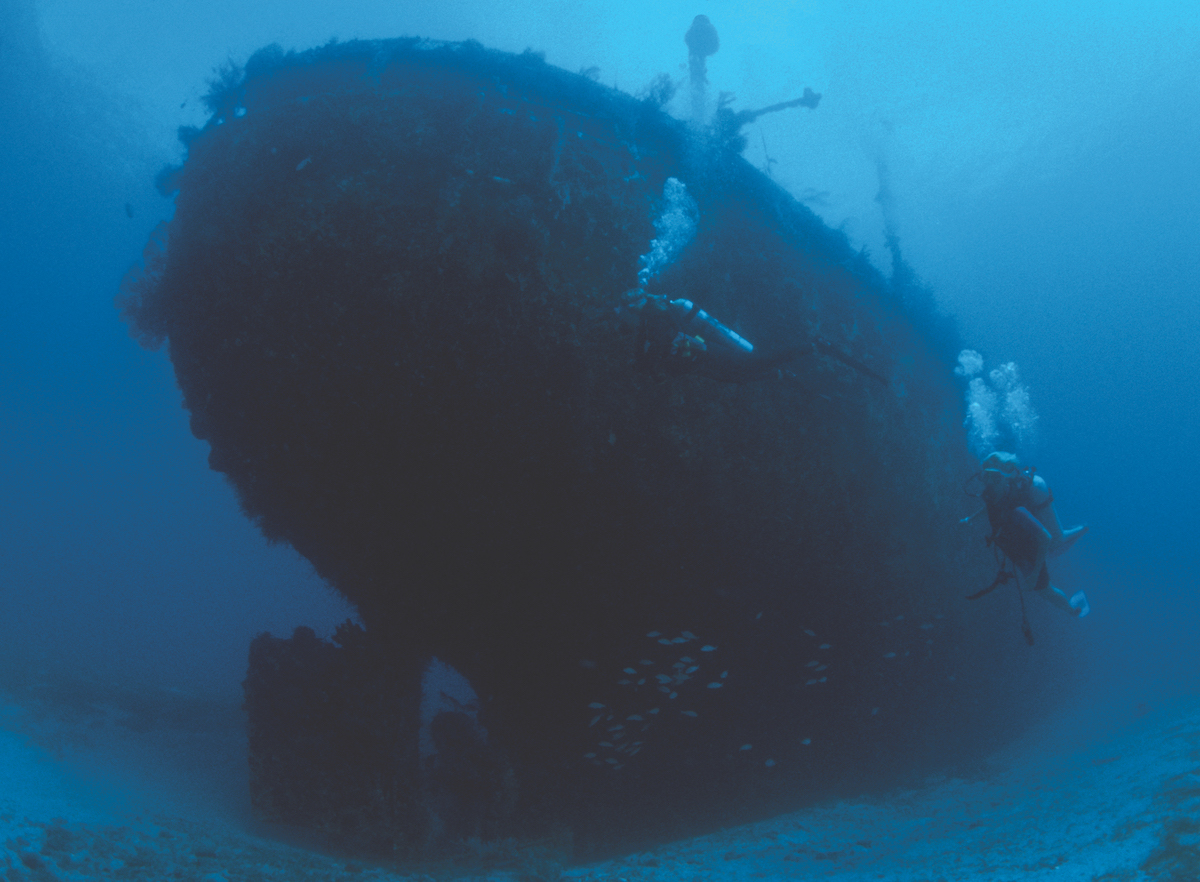
6. Lesleen M
The 50-metre-long cargo ship Lesleen M, lying in Anse Cochon Bay, is by far the most popular. Sunk by the Department of Fisheries in 1986 as an artificial reef project, she now lies upright surrounded by sand and eelgrass at a comfortable depth of 20m. This is without doubt one of the most-colourful wrecks in the Caribbean. Over 34 years, the smooth white painted hull has been transformed into a thriving mass of tube sponges, gorgonians and alcyonarians. Her two gaping cargo holds are easily accessible. But watch out for the large spotted moray that lives by the toppled mast!
Divers can go inside the engine room via the second hold. The engine itself and any snagging wires and pipework have been removed. Only the prop shaft remains. From the engine room it is possible to fin up the stairwell into the cabin area. Shoals of blackbar soldierfish congregate in the open doorways. Macro life includes frogfish, seahorses and octopus camouflaged on the coral-encrusted decks. Hawksbill turtles have taken up residency just off the bow. Although normally offered as a boat dive, it is possible to explore the wreck as a shore dive or a kayak dive.
7. Daini Koyomaru
The 74-metre-long Japanese dredger Daini Koyomaru was sunk in September 1996, by the department of fisheries, as yet another artificial reef project. She originally stood upright, on the seabed, at a maximum depth of 32m. But when Hurricane Lenny struck in 1999 the wreck keeled over onto its starboard side. Soft corals already adorn the railings and steelwork. French angelfish, morays and barracuda are frequently encountered. Not as pretty as the Lesleen M and far less coral growth. Being a dredger, it doesn’t have a conventional V-shape hull. Penetration is possible, but not recommended.
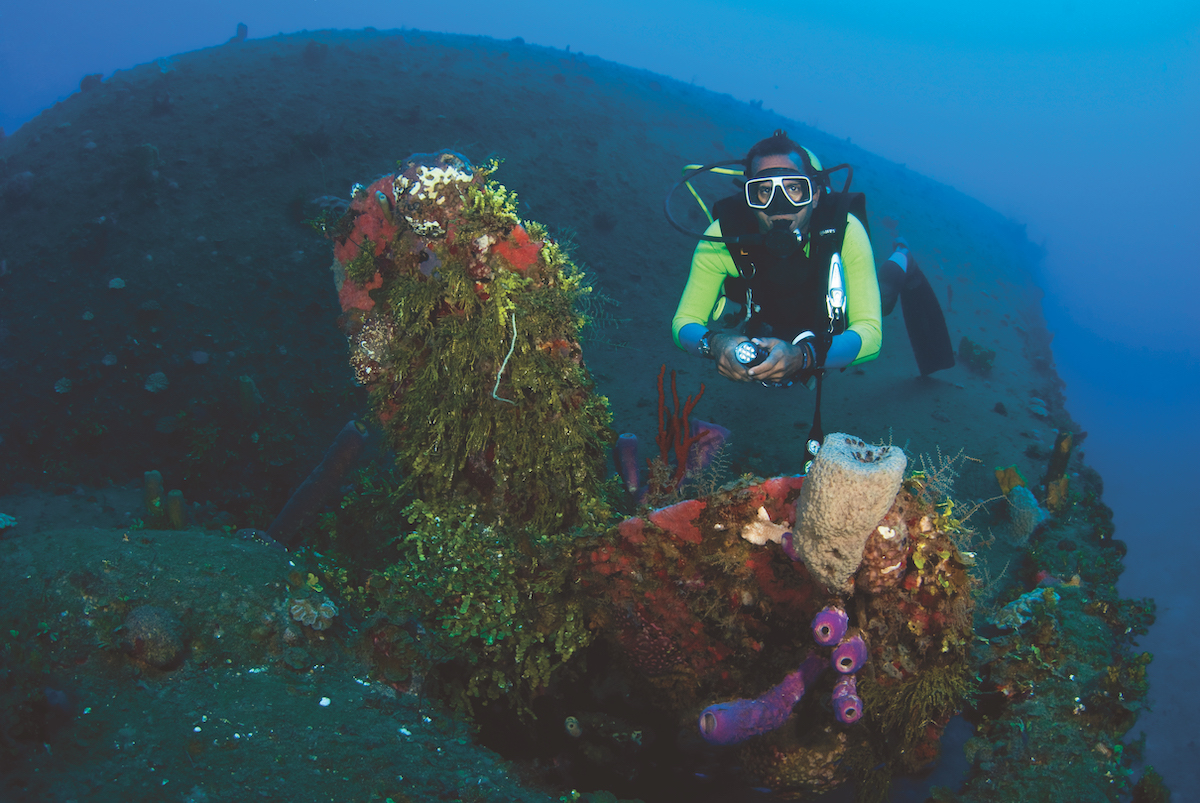
Cuba
Surprisingly Cuba has quite a few interesting wrecks scattered around the coastline. Even the capital Havana has its own wreck site. The battle of Santiago is Cuba’s equivalent to Scapa Flow, although the wrecks bar one don’t come up to the same standard. During the American-Spanish Civil War in 1890, Admiral Pascual Cervera Y Topete set sail for the Caribbean with six Spanish warships. Upon hearing this grave news America mobilised their entire fleet with orders to hunt down and destroy the enemy. After searching for several weeks, the warships were discovered at anchor in Santiago Bay. The Americans tried to blockade the harbour entrance with a coalier called the Merrimac, but her steering mechanism was damaged by gunfire and she drifted out of position, allowing the Spanish to escape up the coast in a westerly direction. The Americans gave chase, picking off the warships one by one.
The 111-metre-long (7,000 ton) flagship Infanta Maria Teresa was the first casualty – bombarded by shells, she eventually caught fire and ran aground. Armed cruiser Almirante Oquendo got slightly further along the coast before receiving a barrage of direct hits and was scuttled in the shallows. Destroyer Furor was sunk and Pluton ran aground and blew up. Vizcaya had an hour-long battle with the US ships and was reported to have been hit around 200 times. A huge explosion forced the ship inshore, where she eventually ran aground.
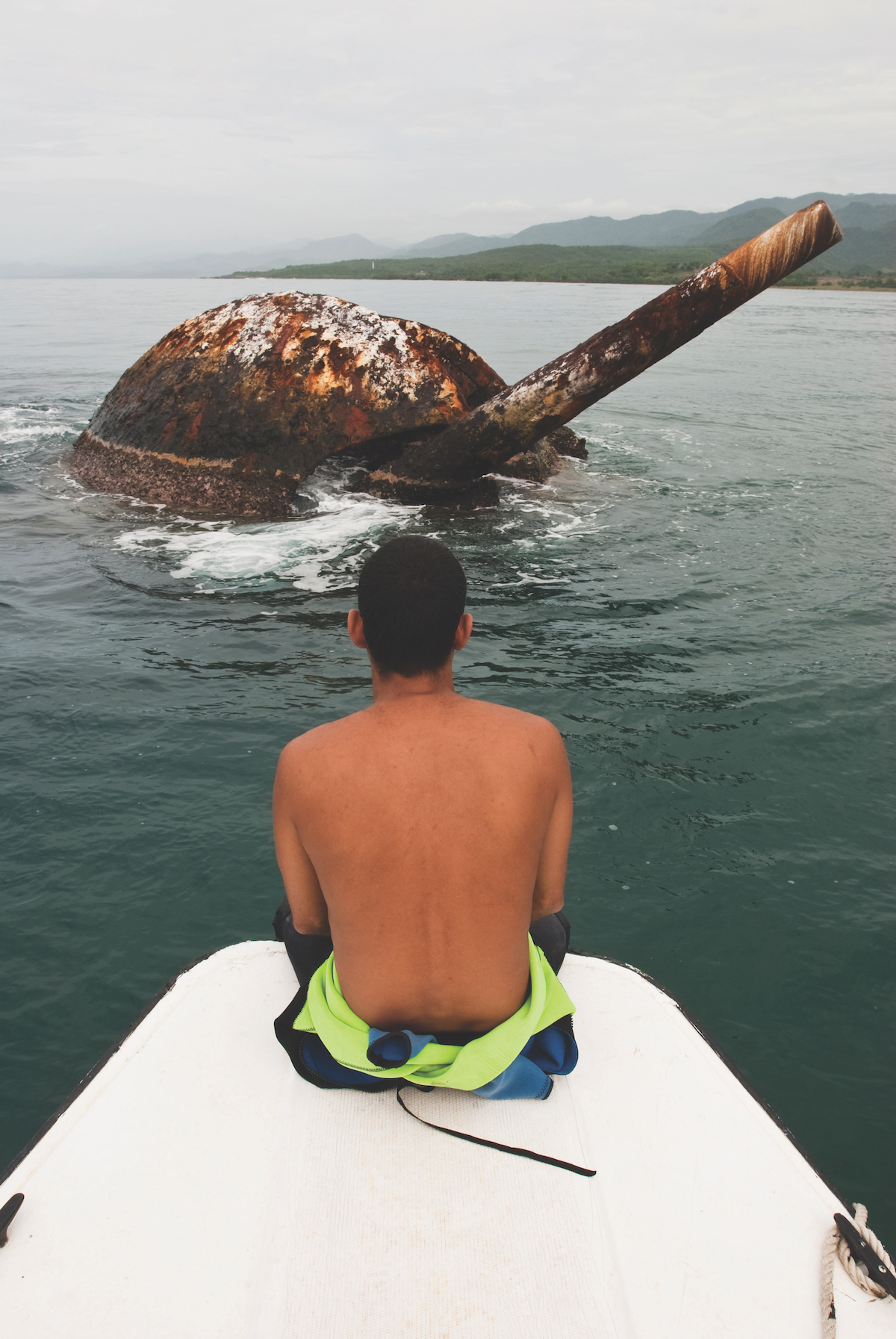
The Cristobal Colon managed to break away from the pursuing American warships. The 112-metre-long (8,000 ton) Italian-built ship was a new, second generation cruiser. With a top speed of 20 knots, she was easily the fastest ship in the Spanish squadron. But Captain Emilio Diaz Moreu had a number of concerns. Firstly, the ship had been dispatched to Cuba without her full armament. The main 10-inch gun was missing. For show, a dummy wooden gun had been fitted to the mounting. Secondly, the supply of high-grade British coal, fuelling the furnaces, was about to run out. The low-quality coal remaining would not allow them to maintain their current speed. This meant that the US ships would eventually catch them up, so he gave the order to open the stop cocks and scuttle the ship.
In a matter of hours, the Battle of Santiago was over. The Spanish Caribbean Squadron had been completely destroyed. All six ships had either been sunk or scuttled, 474 men were dead or injured, and 1,800 men had been captured. A number of American ships had been damaged, but none were actually sunk, and only one US seaman was reported dead.
8. Cristobal Colon
Most of the wrecks are well broken up and lying in the shallows at a max depth of 10m. Cristobal Colon is the only exception. The wreck is still relatively intact lying at a depth of between 6m-30m. There are literally thousands of brass ammunition cases lying in the hold. Passing the funnel heading downwards to the bow divers can explore a number of six-inch side-mounted deck guns. A brass lantern and many other artefacts still lie inside the wreckage.
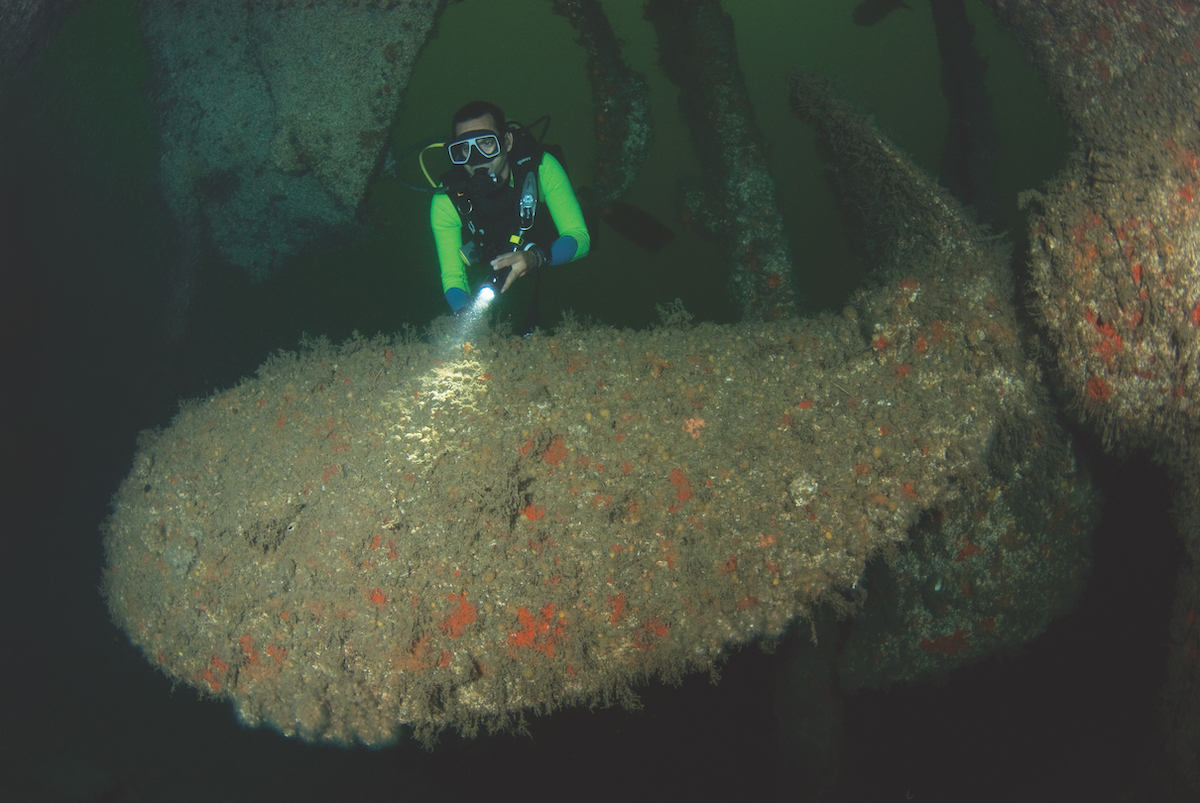
9. The Merrimac
The Merrimac lies in the middle of the busy harbour entrance at a max depth of 20m. It’s only possible to dive the wreck on an incoming tide due to the amount of sediment that flushes out of the harbour. Visibility is around ten to 15 metres with a strange fluorescent green tinge. A torch is essential and some careful finning required owing to the fact that the bottom composition is made up of fine sediment. Most of the topside structure has collapsed. The stern area seems to be more intact, with the massive propeller being the main feature. The cargo holds are still full of coal and there are portholes, anchor chains, bollards and winches scattered on the sea floor. Marine life includes small shoals of fish, jellyfish and lionfish.
Varadero is probably the most-popular tourist destination in Cuba. There are more than 50 hotels fronted by white sandy beach and a central ‘town’ area with plenty of shops and restaurants.
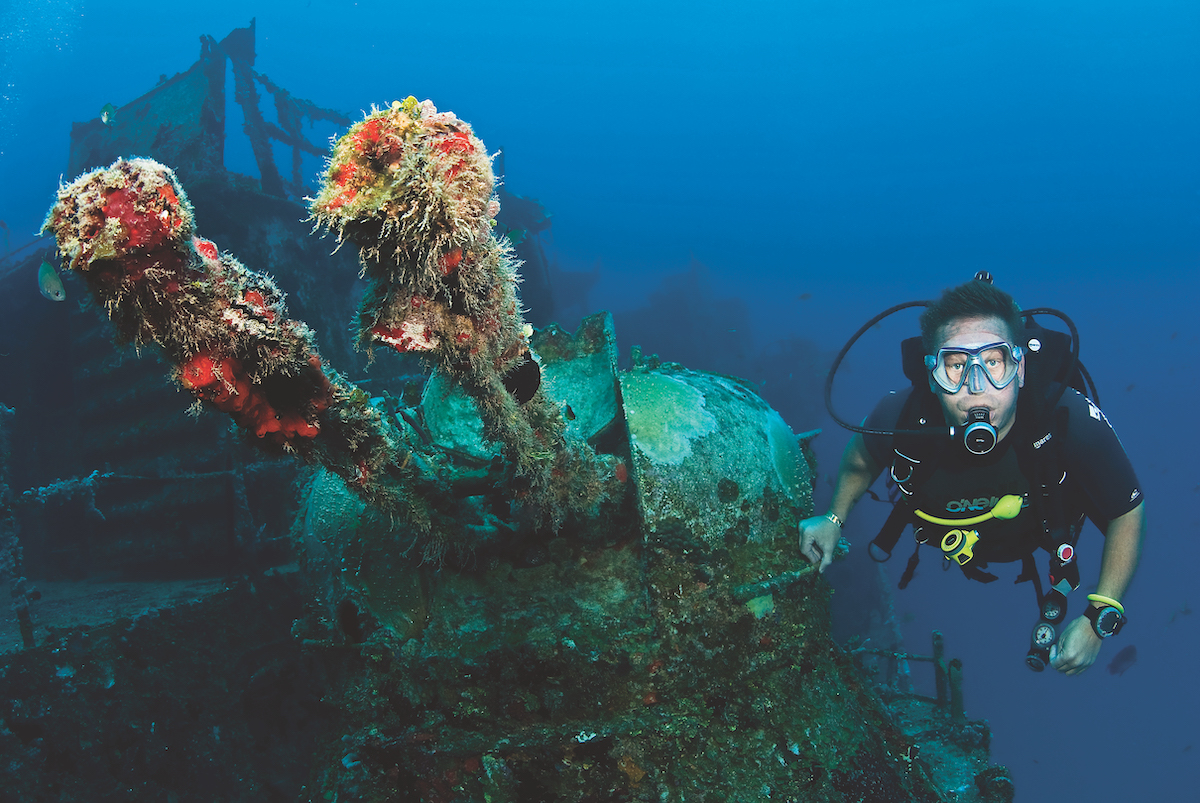
10. P383 Destroyer
The P383 Destroyer is located inside the Cayo Piedra Underwater Park about 15 minutes boat ride from the dive centre. The Russian warship, a remnant of the Cold War, was sunk as an artificial reef project in 1998. The 97-metre-long wreck sits upright at a max depth of 28m, which allows plenty of no-deco time for exploration. The ship was sunk with a full load of armaments including a number of gun turrets and rocket launchers. The radar tower is also still intact complete with satellite dishes.
“The small gun turrets located amidships port and starboard are perfect for photographs and their rounded shape looks very similar to the Daleks in Doctor Who!”
There is not much coral growth but plenty of fish activity, including jacks, damsels, barracuda and lionfish. Dive guides don’t usually allow divers inside the wreck. There is a mooring line attached for safe ascents and descents.
11. The Sletrea
The Sletrea was also sunk as an artificial reef project. The wreck lies about 20 minutes boat ride from the dive centre. The remains of the oil tanker are split into two parts. The stern is the ‘shallower’ section at a maximum depth of 35m. The dive centre promotes the stern as the more-interesting part to explore. This basically comprises of the bridge, cabin area and part of the hold. Marine life includes big barracuda, morays, lionfish and spadefish.
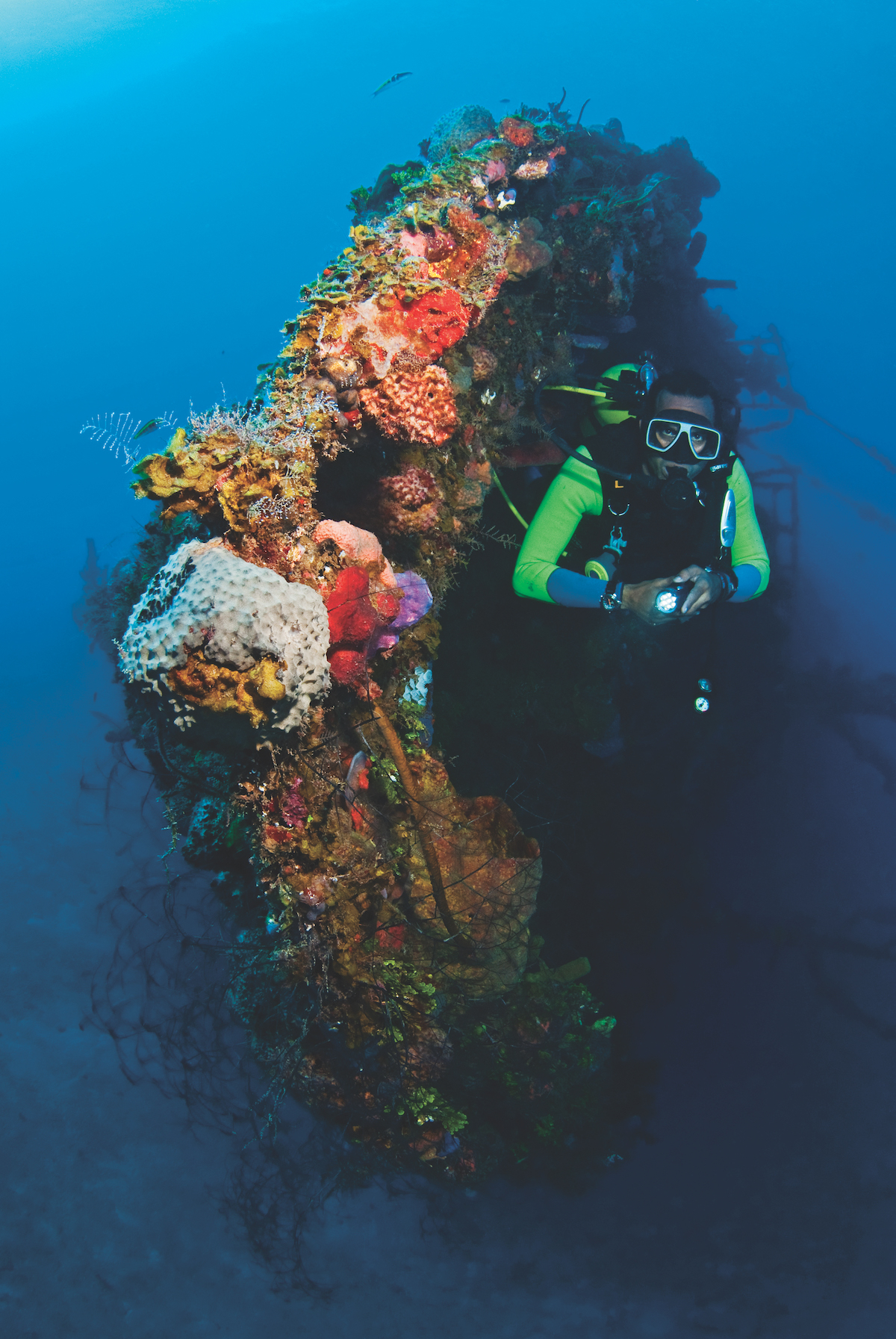
Grenada
Grenada is known as the ‘wreck diving capital of the Caribbean’, and with more than 40 different sites on offer, 14 of which are good-quality wrecks, it offers some of the best wreck diving in the Caribbean. It’s recommended to visit during the summer months when there are far less tourists about. The only slight negative is the sea can turn green and this can happen any time, there is no particular season. There are around seven dive operations on Grenada and two on neighbouring Carriacou, including Aquanauts Grenada, Dive Grenada, Eco Dive and Deefer Divers.
12. Bianca C
The Bianca C, known as the ‘Titanic of the Caribbean’, was built in France during World War Two and originally named the Marechal Petain. The hull was being towed to Port de Bouc when she was torpedoed and sunk by a German U-boat. The ship was raised and renamed the La Marseillaise. She was refitted as a luxury cruise liner and eventually sold to the Italian Costa steamship line, where she was given yet another refit and named the Bianca C.
From 1959, the 180-metre-long ship sailed between Naples, Italy and Guaira, Venezuela, making regular stops in the Caribbean. On Sunday 22 October 1961, she lay at anchor just off the coast of Grenada, when a huge explosion tore apart her engine room. More than 700 passengers and crew scrambled for the lifeboats. Three crewmen died and six others were badly burnt. The ship’s Captain Francisco Crevaco escaped unharmed. Local firefighting services couldn’t cope with the raging inferno, so a distress call was put out to British frigate HMS Londonderry. The Bianca C lit up the sky for two days solid before the warship arrived on the scene. There were concerns that the Bianca C would sink in the entrance to St Georges Harbour, so the Londonderry towed her out to sea. But the stricken vessel was already sinking. Bad weather hindered progress and six hours later the towline snapped. Soon afterwards the massive cruise liner disappeared beneath the waves. Her final resting place lies approximately 5km from the harbour entrance, close to popular tourist spot Grand Anse Beach.
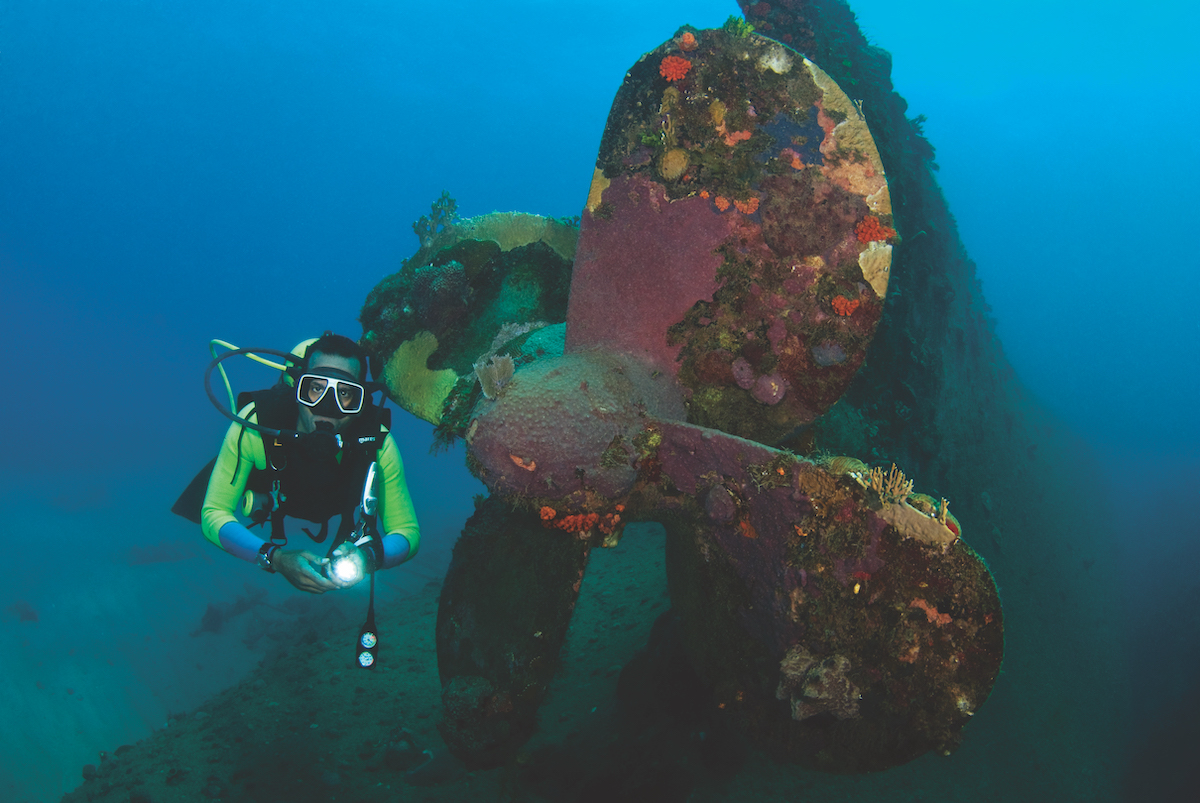
Strangely enough, this was supposed to be the ship’s final voyage. Sabotage was never suspected, but there were rumours that explosives had been smuggled aboard and may have ignited. At least she survived the scrap yard and is now admired by divers from all over the world. The wreck, which has been designated as a marine park, is another top site for some of the best wreck diving in the Caribbean. It’s in a good strategic position where the Atlantic and Caribbean currents meet, so there is a good chance of seeing bigger marine life, including eagle rays, barracuda, turtles and reef sharks.
This is a huge wreck although much has now collapsed or is unstable due to being weakened by the fire. The prop shafts are at a depth of around 40m. Both propellers were salvaged in the 1970s and sold for scrap, leaving great big empty holes. The portside rudder is stuck at an unusual angle confirming that they had indeed jammed during the blaze. The hull has multiple entry points amidships with rows of portholes.
“The base of the foremast is a garden of beautiful purple and yellow gorgonian sea fans and the access ladder leading upwards was just a mass of soft corals in hues of orange, pink and white.”
Great barracuda often patrolled the mast top, sometimes venturing unnervingly close. The huge dramatic-looking bow stands 20 metres proud of the seabed. The anchor lies at 50m, which is the deepest point. Try and plan at least three or four dives to fully appreciate this wreck.
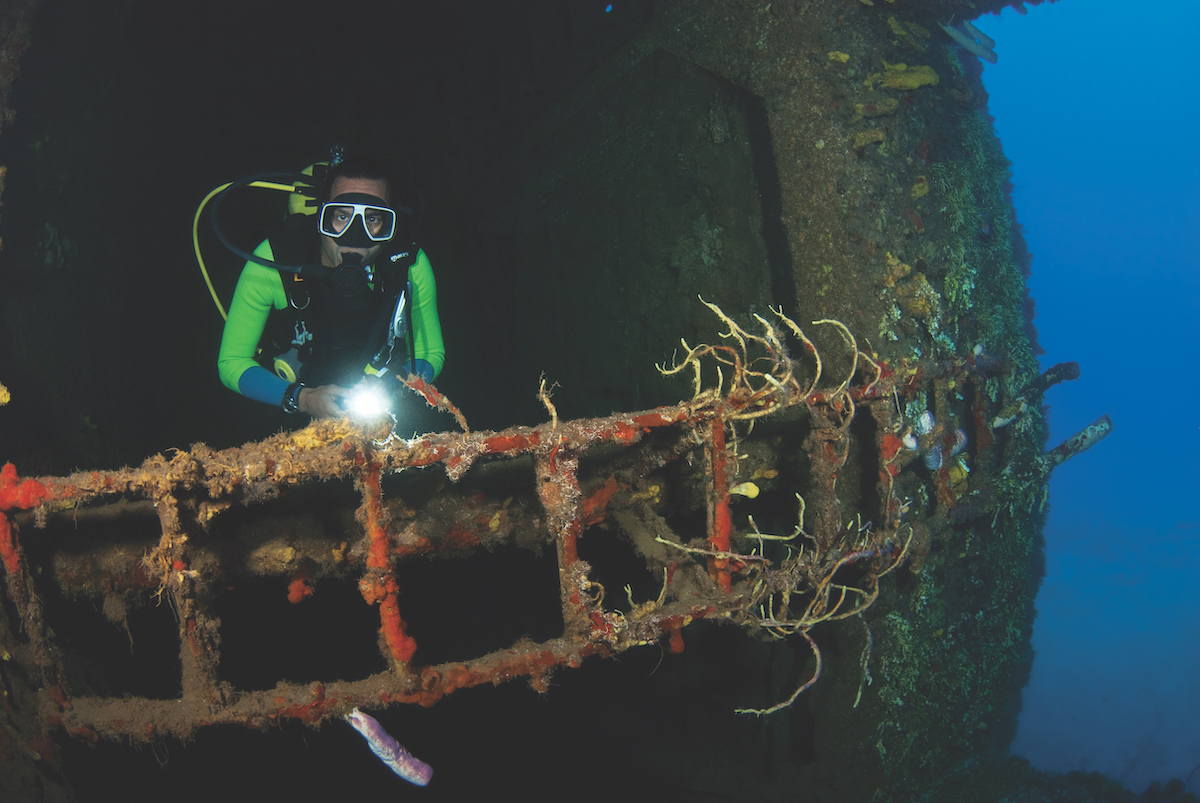
13. Shakem
The 60-metre-long freighter Shakem sank in 2001 fully laden with a cargo of cement bags. The stern and prop is a lush forest of colourful pink and white soft corals. Max depth is 30m. Penetration is possible with doorways leading inside the bridge and cabin areas.
14. Car Pile
Just to add some variety, there is also a ‘wreck’ site called Car Pile. This had obviously been a dumping ground for old cars over the years. The pile begins at 25m and goes down to a depth of 40m. The two VW Camper vans are the most memorable. It’s even possible to wriggle inside.
There is also an underwater sculpture site created by Brit Jason DeCaires Taylor located at Molinere Bay. The series of sculptures have been on the seabed in 2006. The most prominent is known as the Circle of Children.
15. King Mitch
The Atlantic wrecks can be more challenging with strong currents and choppier conditions. The ex-navy minesweeper turned cargo ship King Mitch sits proud of the seabed at a max depth of 36m. Nurse sharks are often sighted under the hull and in the bridge area. Part of the upturned hull is covered in beautiful orange anemones. The cargo holds are easily accessible. Turtles can be found sleeping inside.
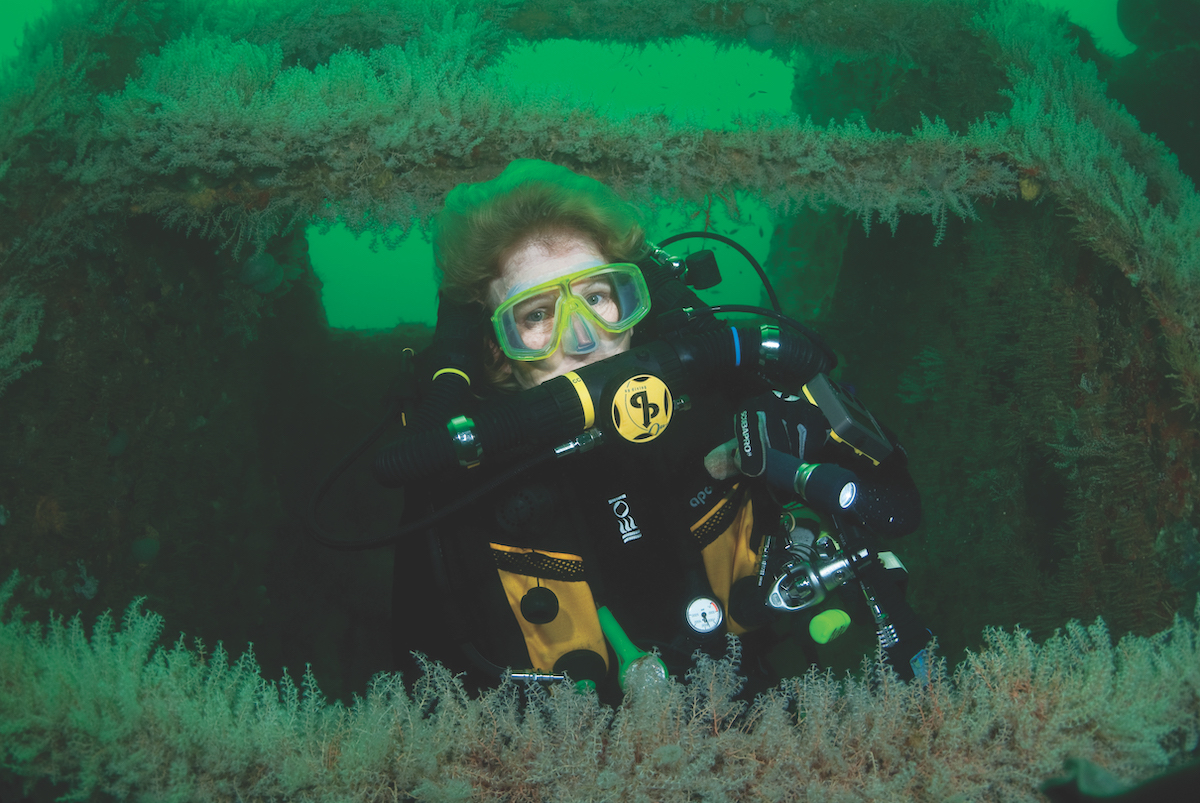
Best wreck diving in the Caribbean – Conclusion
Hopefully I have managed to whet everyone’s wreck-diving appetite. The Caribbean really does have some exciting wrecks to explore, from entry-level right through to trimix rebreather. There are plenty more exciting wreck dives on the Caribbean islands I haven’t mentioned, but I will save these for another time!
